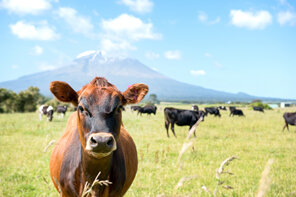
Salmonella bacteria cause a disease condition called Salmonellosis which is a serious, often fatal, highly infectious bacterial disease of animals and humans.
Salmonellosis is directly transferrable from animals to humans through close contact and poor personal hygiene. It can affect cattle, sheep, birds, companion animals, and humans where it causes dysfunction of the gastro-intestinal tract which, in farm animals, results in profuse diarrhoea, dehydration, and generalised bacterial infection of the blood.
Salmonellosis is commonly fatal.
Symptoms
Salmonellosis in farm animals is characterized by either low or high infection rates, low or high death rates, and by carrier animals showing no symptoms. All ages of stock can be affected. It is a common cause of calf scour, in heifers it can cause late term abortion. Adult dairy cattle can be affected by diarrhoea, abortion, milk drop syndrome, and mastitis. Sheep can be affected by abortions and deaths.
Risk Factors
Risk factors for Salmonella infections are not always clear. Recent outbreaks in New Zealand have followed a very wet winter period. Birds, especially the Black Backed Gull, are known carriers of the disease. In many cases the cause of an outbreak is not clearly known.
Salmonellosis can occur in well fed, well managed herds and in herds where Salmonella has been diagnosed in the past. A change in feeding, which can change rumen and abomasal conditions, is thought to play a role in enabling the multiplication of Salmonella bacteria.
Calves pick up the infection from the environment, possibly from animals that are shedding the infection in their faeces or from other sources. Risk factors for calves include poor colostral transfer, draughts, poorly draining calf pens, feeding cold milk, and over and under feeding.
Diagnosis
Early diagnosis and treatment will reduce deaths and limit financial losses. Diagnosis follows a veterinary visit and laboratory confirmation.
Treatment and Prevention
After a veterinary diagnosis has been made treatment consists of controlling the infection with effective antibiotics and maintaining fluid balance with electrolytes. Salmonella in calves can be prevented or treated with anti-salmonella antibodies and with fluid replacement therapy. A vaccine is available for prevention. Its use should be discussed with your veterinarian.
Salmonella is a difficult disease to predict and completely prevent. You should discuss prevention strategies with your veterinarian.